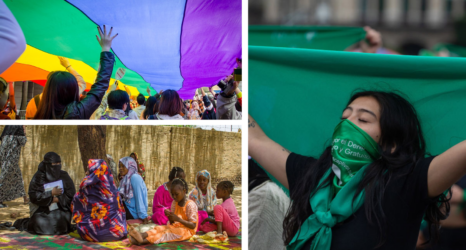Just in time for Pride Month, U.S. media monitoring organization GLAAD, along with Proctor & Gamble, released a study examining the attitudes of non-LGBTQ people towards LGBTQ topics in the media—in order to examine how representation affects people’s attitudes.
The study, which purports to be the first of its kind, emphasizes the importance of media representation for LGBTQ individuals in the U.S.
Conducted during November and December of 2019, the study surveyed 2,031 non-LGBTQ adults in the U.S., and concluded that more non-LGBTQ individuals than ever knew at least one LGBTQ person in their personal life.
It also highlighted the importance of representation in media, reporting that not only were non-LGBTQ people more comfortable with LGBTQ people in the media they consumed, but they were increasingly accepting of and comfortable around LGBTQ people in real life if they’d been exposed to LGBTQ media.
The study also determined that non-LGBTQ consumers tended to look favorably on companies who included LGBTQ people in their advertising campaigns. Companies with LGBTQ representation were seen as more “socially responsible,” and more likely to “treat all their employees with respect.”
And LGBTQ representation is profitable: Sixty-eight percent of survey respondents felt better about buying products from companies with LGBTQ-inclusive ads. This offers a clear incentive for brands to step up their representation game—something we’ve already started to see, with ads such as last year’s viral Gillette commercial, which showed a father teaching his trans son to shave.
While this study clearly shows that media representation can be a powerful tool for acceptance, it raises the question of the role of brands in promoting LGBTQ rights, and on a larger level, the role of corporations in social movements.
“What we’re seeing in terms of corporatization and consumer influence is to a large degree a completely logical outcome of a gay rights movement that was predicated on a series of reforms—legal, judicial and cultural—all [geared toward] acceptance,” said Michael Bronski, a gender and sexuality professor at Harvard University in a recent piece by Naveen Kumar for them.
Many writers and activists point out that while increased acceptance shows progress, it’s important to interrogate corporate interests and follow-through:
- Do these companies actually treat their employees (LGBTQ or otherwise) well?
- How much money from their “pride” line is actually going back to the communities they claim to support?
- And in the media, which community members are represented—and by extension, accepted by—the public?
As we move into Pride Month, it’s clear there more work to be done surrounding the role of corporations in LGBTQ activism. But this new survey reveals a path forward to greater acceptance and understanding of LGBTQ identities, and demonstrates that it is in everyone’s best interests to promote media representation of LGBTQ people.
As Sarah Kate Ellis, president and CEO of GLAAD explains, “The findings of this study send a strong message to brands and media outlets that including LGBTQ people in ads, films and TV is good for business and good for the world.”





